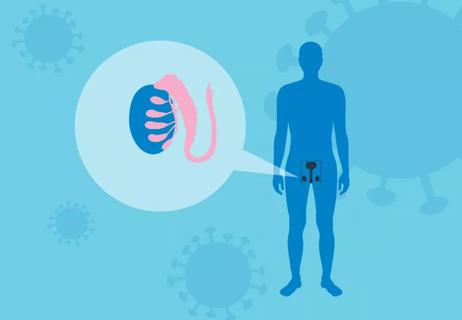Redness, swelling, itching and rash can happen when your body’s immune system reacts to the vaccine injection

Like many vaccines, the COVID-19 shot can sometimes cause side effects, like mild, flu-like symptoms. But what if shortly after your vaccine, you’re still feeling pain in your arm and notice a big, itchy, red blotch near the injection site?
Advertisement
Cleveland Clinic is a non-profit academic medical center. Advertising on our site helps support our mission. We do not endorse non-Cleveland Clinic products or services. Policy
It’s been dubbed “COVID arm,” a rare symptom that some people have reported after being vaccinated for COVID-19. If you’re experiencing this, you’re likely wondering if it will clear up on its own or if it’s something you should be concerned about. And how do you know if something more serious is going on?
Inflammation and immunity specialist Thaddeus Stappenbeck, MD, PhD, explains what COVID arm is, why it happens and how to find relief.
COVID arm is thought to reflect your immune system’s response to the vaccine. While it can be uncomfortable, it’s usually temporary and not considered dangerous.
Symptoms of COVID arm include:
This doesn’t just happen with COVID-19 vaccines either, points out Dr. Stappenbeck. If you’ve ever had a tuberculosis test where you receive the injection under your skin and then get checked a day later to see if there’s any puffiness, what they’re testing for is something called a “delayed-type hypersensitivity reaction.”
Side effects of COVID arm typically occur about seven days after the first shot and about two days after the second dose. “It usually takes a few days to develop,” confirms Dr. Stappenbeck.
Advertisement
This unusual symptom happens because of the way our immune system works. When you get the COVID-19 vaccine, it contains a tiny piece of the virus that instructs your body how to recognize and respond to the virus. This helps your immune system learn how to fight the virus if you ever come in contact with it.
“What we essentially think is going on with COVID arm is that your immune cells are reacting to muscle cells that have taken up the messenger RNA vaccine,” explains Dr. Stappenbeck. “The immune cells can be a little over-exuberant because they view the SARS-CoV-2 spike protein produced by the vaccine as an infection that they need to fight off.”
In some people, their immune system responds strongly to the vaccine. It sends lots of immune cells to the area where you got the shot, causing side effects in the arm and throughout the rest of your body.
“That’s the puzzling thing when it comes to COVID-19. You’d think that this virus would just cause a cold and that’s it. But when it gets deep into your lungs, then it’s a race against the clock. The part of your immune system that’s making the antibodies will ramp things up to clear the virus,” he continues.
With the vaccine, Dr. Stappenbeck adds that your innate immune system is trying to destroy that piece of virus from the immunization. “Vaccines help your body begin making antibodies more quickly if you’re exposed to the virus, which may lower the risk of severe illness.”
You can expect symptoms of COVID arm to last for a few days to a week. It’s a temporary side effect of the COVID-19 vaccine and usually goes away without needing any specific treatment. In most cases, people notice improvement within a few days, and the redness, swelling or rash on the arm gradually fades.
“COVID arm usually goes away within a few days and is not life-threatening,” Dr. Stappenbeck reiterates.
If you notice your symptoms lasting longer than a week or if they worsen, you should contact a healthcare provider for guidance and to rule out any other potential issues.
If you’re experiencing COVID arm, here are some ways to ease the discomfort:
Advertisement
It’s also good to plan before your next COVID-19 vaccine. “If you’re worried about possibly having a sore arm after your next immunization, get it in the opposite arm to make things a little easier,” advises Dr. Stappenbeck.
If you notice symptoms like COVID arm after vaccination, it usually clears up within a week. If your symptoms continue or worsen, reach out to a healthcare provider for guidance.
Advertisement
Learn more about our editorial process.
Advertisement

Updated vaccinations are recommended to better protect against the evolving virus

Irregularities in cycle length and flow aren’t a cause for concern

Before you panic, here are the options to consider

Just one more myth to add to the misinformation pile

Our expert explains why swollen lymph nodes happen

Follow these tips, like hand washing and self-care, to keep illness at bay as you celebrate the season

From washing your hands and disinfecting surfaces to boosting your immune health, there are many ways to reduce your flu risk

Most can return to work or school when they’re symptom-free for 24 hours

Start having sex about 72 hours before ovulation, then at least every other day during your fertile window

Attachment theory suggests that your earliest relationships shape connections throughout your life

It isn’t a recognized mental health disorder, but research shows that problematic social media use can negatively affect your mental health, self-esteem and sleep